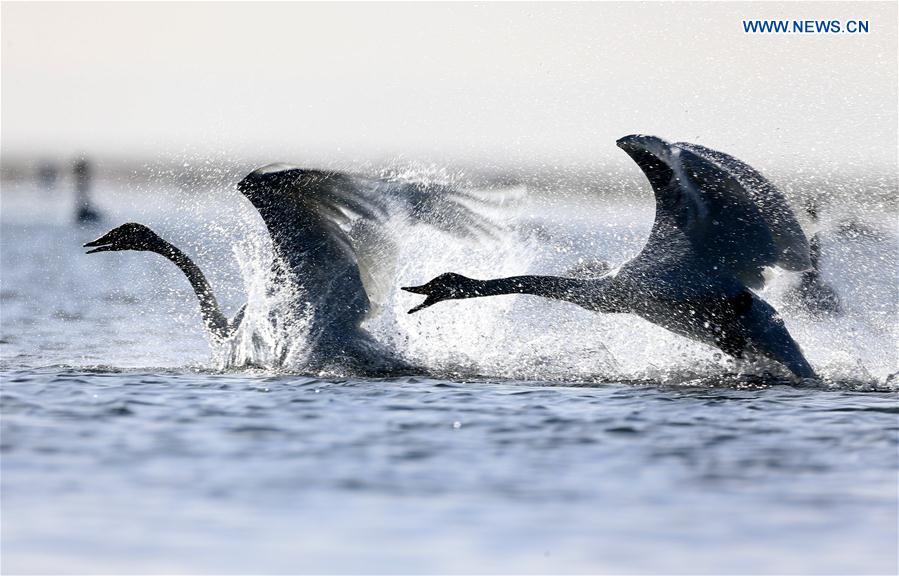Environment at Qinghai Lake improves
“As the largest salt-water lake in China, the Qinghai Lake has adapted to climate change and made major improvements with the help from local government. The lake is now the biggest it has ever been in 15 years, very robust, and improving the habitat for all of the surrounding areas.” said Dai Sheng, a senior engineer at the Qinghai Province Climate Control Center, on Feb. 24.
The Qinghai Lake is an important body of water for ecological balance in the northeast part of Qinghai-Tibet Plateau, not only does it help stop the desertification toward the east, it also helps to adjust regional climate. Its unique ecological features and transformation reflect the overall changes on the plateau.
According to data recorded by the Qinghai Province Climate Studies Institute on July 2015, the Qinghai Lake has expanded again to now measure 4,432.32 square kilometers, which is the largest it has ever been detected via remote sensors in 15 years. The lake has grown steadily ever since 2005.
The Qinghai Lake experienced a major milestone in 2004. Its surface area was 4,244.5 square kilometers at the time, and has continued to grow since 2005. Last July, during the peak water season, the lake grew by 187.82 square kilometers as compared to 2004.
At the same time, the lake has continued to increase its elevation thanks to man-made climate adjustments. As of the end of 2015, man-made rain helped the annual water growth rate to reach 10 percent, with an annual average amount of water growth between 920 million and 1.38 billion cubic meters. The annual average water input amount is from 190 million to 290 million cubic meters.
Since 2008, the Qinghai provincial government has implemented measures such as limited farming to cultivate forests and grassy areas, protecting natural forests, reducing desertification, and cultivating mountain forests, all of which have helped improve environment at the Qinghai Lake.
Cai Jinlong, director of the Qinghai Lake National Conservation Agency said, “the increased water elevation has helped increase species around the lake.”
According to the Qinghai Forestry Department, there were a total of 13,500 water fowls in 28 species recorded during the last winter migration.
The new and varied species of water fowl is a signal that the habitat surrounding the Qinghai Lake is improving, said Wang Enguang, the chief engineer at the Qinghai Forestry Department.
Your Comment
Name E-mailRelated News
-
;
-
-

-
Swans in Qinghai Lake, NW China
Swans swim in the Qinghai Lake in northwest China's Qinghai Province, Feb. 26, 2016.
-
-
-

-
Swans swim in Qinghai Lake
Swans swim in Qinghai Lake in northwest China's Qinghai Province.
-
-
-

-
Garbage threatens Qinghai Lake and its surroundings
Qinghai Lake is a saline lake in the province of Qinghai. It is the largest lake in China and a renowned attraction for travelers from all over the world. However, such beautiful scenery can hardly be seen these years.
-
Based in Lhasa, Tibet Vista is a Tibet travel agency that specialized in Tibet permit, and Tibet tours for both private and group travelers at a local price!
•4 Days Lhasa City Group Tour from USD 460 •8 Days Everest Base Camp Group Tour from USD 850 •15 Days Mt.Kailash Group Tour from USD 1780 •2016 Tibet Train Tours from Beijing, Shanghai, Chengdu, Xining,etc










